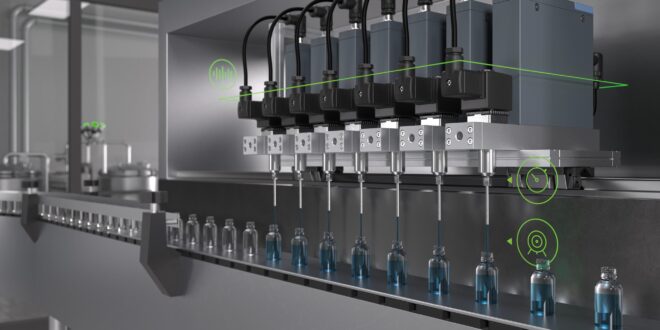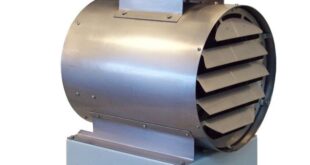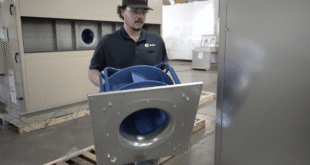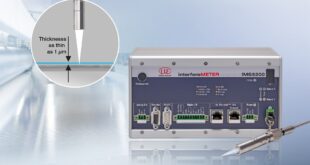Precision and accuracy are essential for liquid dosing applications to ensure quality and safety. While these factors are vital at the micro level, macro scale applications, involving litres of product, can also make significant efficiency gains by optimising dosing control. To achieve this, selecting the right valve and measurement technology is vital, with the right level of automation. Troy Steh talks about the requirements across all scales of dosing applications
From adding flavourings in food production through to dispensing reagents in life science, the range of liquid dosing applications is widespread. While the scale ranges from the macro to the micro, measuring in litres down to microlitres or below, the fundamental requirements remain the same. The repeatable accuracy of liquid dosing is the primary criterion in the first stage of flow control system specification, combined with the precision required to match the application and its dosing scale.
These attributes are essential to the quality, efficacy, and safety of the process or product that results, but they are also the cornerstones to optimise application efficiency and speed. For a lab pipetting machine to maximise throughput, or for a drinks company to minimise produce wastage, both must rely on precise, accurate, and repeatable flow measurement and control.
Macro-level dosing
The macro level of dosing, with flow rates measured in litres or m3 per hour, includes industry-scale food & beverage production, such as bulk liquid ingredients, as well as pharmaceutical development, such as the control of purified water or water for injection (WFI). While this scale might more readily be described as batching, accurate and repeatable control remains crucial, particularly to make efficiency and cost-saving improvements.
In applications that deal with higher flow volumes, a time-pressure dosing method is often used. While a fixed pressure is applied to the liquid, a solenoid valve opens for a pre-set duration, allowing through an intended volume of fluid. Although time-pressure dosing techniques can achieve the required level of precision, right through to the micro level, this system is open loop in that it doesn’t measure the actual volume of liquid delivered. Changes to attributes such as temperature or backpressure can impact the actual delivery but in an open loop system, these deviations remain undetected.
To enhance accuracy, an alternative is to add a feedback device, such as a flowmeter, creating a closed loop system that measures the final output of the valve or pump system. On a recent project, a large beverage producer was able to save over £100,000 a year in lost product by upgrading flow control accuracy to 0.4% of the measured value, repeatable to just 0.2%. Even for smaller producers, accumulated efficiency gains can achieve a return on investment in a matter of months by upgrading the accuracy and repeatability of flow control for high volume batching.
Automation and data
Surface acoustic wave technology, which was first discovered in the 1880s, can achieve these enhancements. Measuring the speed and attenuation of the waves presents the changes in the flow, mass, temperature, and density of the media with precise readings. A further advantage of utilising surface acoustic wave technology, the measurement method behind Bürkert’s Type 8908 FLOWave flowmeter, is that their sensors don’t make direct contact with the media. This significantly enhances hygiene, crucial for most batching and dosing applications, and increases the ease and speed of cleaning, which can also help improve overall productivity.
The digital connectivity of an Internet of Things-enabled flowmeter also presents the advantages of live data. Using a communications protocol like CANopen, FLOWave creates an automated process with connectivity to wider control hardware. This means that data surrounding the process can trigger live alerts, enabling rapid reaction to events in the now, as well as historical analysis to discover trends over time.
Micro-level dosing
Decreasing in scale from litres and millilitres down to microlitres and even nanolitres, the need for precision increases. At this scale, a tiny variation can result in a significant percentage error deviation, which could change the flavour of food produce when an additive is presented, or impact how a reagent behaves in a lab setting. Returning to a time-pressure dosing technique, mircrovalves with sufficient precision can achieve 10 μs (microsecond) control signal steps with less than 1% deviation of the target figure.
If greater precision and accuracy are required, a closed loop system can be introduced. Here, flow meters that operate on the Coriolis principle remain the standard. This technique uses the vibrations of a liquid-carrying tube that are measured to calculate flow based on mass. Bürkert’s latest mass flow meter with an integrated differential pressure sensor achieves precision down to 50 nl (nanolitres), with repeatable accuracy lower than 1% deviation. When this level of precision is reached, communications integration to capture real-time data is essential to fine-tune control, as well as identifying wider trends to optimise system automation.
Fluid control expertise
While the requirements between macro-level batching and micro-level dosing are diverse, the needs of each application, the properties of the liquid in question, as well as the environment of use, all require careful analysis. Not only can these attributes introduce challenges such as hygienic conformance or system durability and lifetime, but they can also impact precision and accuracy.
The selection of the control valve for a dosing system is made to optimize control characteristics, orifice size and actuation type, while being materials compliant and in accordance with industry standards such as FDA and USP class VI. In conjunction with valves, measurement devices, and controls that are tested to achieve optimal precision and accuracy, it’s essential to integrate the right design and seal materials. This requirement expands when manifold integration is also required, and here, materials selection is key, especially when considering a multi-channel design.
Troy Stehr is Business Development Manager for Lab & MedTech applications at Bürkert.
 Engineer News Network The ultimate online news and information resource for today’s engineer
Engineer News Network The ultimate online news and information resource for today’s engineer




